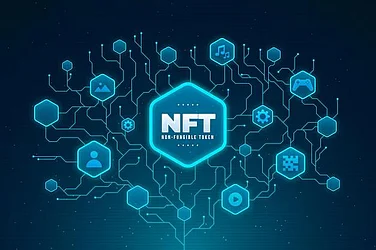Behind the glitz of cryptocurrencies is a less glamorous but extremely technical universe of engineers constructing, operating, and defending the back-of-the-house machinery underpinning the decentralized web. They are engineers and not programmers—infrastructure builders, system thinkers, and problem solvers working across different domains of cryptography, computation, and distributed systems.
Crypto infrastructure does not grow on trees. It is meticulously designed, exhaustively tested, and over-engineered by a worldwide community of professionals. They are the backbone of the decentralized economy.
This article goes in-depth into who they are, how they do what they do, and what types of development are behind the crypto space—from low-level protocol engineering to data indexing and security.
Core Protocol Developers: Consensus and Network Logic Builders
Blockchain networks operate on their infrastructural level on infrastructural protocols—sets of rules dictating how information is created, communicated, authenticated, and stored by distributed parties. Creators of foundational protocols build and launch these rules. Their efforts meet consensus mechanisms (e.g., proof-of-work or proof-of-stake), block validation logic, transaction types, peer discovery protocols, fee models, and protocol-upgrade mechanisms.
Their responsibility is way more than just writing straight software. They have to provide decentralization, liveness, fault tolerance, and security—optimal network performance and resource utilization. Their choice is the basis of correctness and completeness of the whole network, and even minor choices here—block size, gas limits, or finality rules—can have substantial ecosystem-level impacts.
They usually work together in public repositories, proposal systems, and international developer appeals. They also have the responsibility of speaking up for upgrades, maintaining hard or soft forks, and defining protocol-level behavior which serves as the basis on which all other developers work.
Infrastructure Developers: Network Availability and Reliability
After a protocol is designed, it needs to be interacted with. The infrastructure developers are the ones responsible for developing and managing the tooling that allows the user or application and the network to interact. Examples include node software, hosted node services, RPC endpoints, load balancers, transaction relays, and network APIs.
These builders work with scale and dependability. They construct systems that process thousands (or millions) of requests per second across worldwide networks. Their work makes wallets able to query balance, dApps able to publish a transaction, explorers able to query history, and users able to onboard with minimal technical resistance.
Infrastructure development is the operation of testnets, faucet systems, archive nodes, and monitoring frameworks for uptime, performance, and synchronization 24/7. These developers work in the world of operations of decentralization and come up with fallback mechanisms, redundancy layers, and cross-data-center deployments such that use worldwide 24/7 becomes a possibility.
Data Infrastructure Developers: Organizing and Indexing the Decentralized Web
Blockchain networks inherently store raw transactional information in append-only data structures that cannot easily be queried in-directly. Data infrastructure engineers construct the infrastructure to index, organize, and expose the data into structures that are real-time consumable.
These include subgraph construction, on-chain parsers, block indexers, event listeners, and query engines. These enable developers to construct applications from certain kinds of transactional data, contract events, or past facts—without needing to process full chains manually.
Such front-end endeavors feature centrally this expansion. They include dashboards, analytics portals, and UI of real-time blockchain data. The developers in this field create GraphQL endpoints, APIs, and middleware that ease extraction, aggregation, and filtering of data across blockchains.
They also deploy cross-chain data indexing so that interoperable dApps and analytical tools can retrieve data from various networks and offer them in a single interface.
Smart Contract Developers: Developing Self-Executing Application Logic
Smart contract developers are application-level infrastructure matter. They author, test, and deploy decentralized logic that sits on the blockchain and executes automatically upon the occurrence of specific conditions. These types of contracts govern decentralized exchanges, token releases, lending platforms, identity systems, and so on.
Their work is not only important but also radical. Smart contract developers differ from most web developers in that they have economic implications of limitations, transparency, and immutability. They don't usually hot-fix bugs in their code, and bugs can lead to permanent financial loss or protocol exploits.
In a bid to reduce risk, these developers use disciplined development techniques—version control, static analysis, sim environment, formal verification tools, and community code review. They create the visible "apps" of the decentralized world but also the invisible background services like multisig safes, automatic payout, on-chain governance modules, and fee-sharing systems.
They need to be smart contract language-smart as well as on-chain economics, adversarial design, and system modularity smart.
Formal Verification Specialists and Security Auditors: Integrity Guaranteed on All Layers
Crypto infrastructure is particularly exposed: it's public, permissionless, and non-revocable. Therefore, all code—in the low-level protocol or an individual line of code in a smart contract—needs to be tested in battle mode before deployment. That's where formal verification specialists and security coders step in.
They have knowledge to identify weaknesses, logical errors, unintended economic behavior, and attack vectors that can destabilize the system or lead to money loss. They use a mix of manual code review and automation using a mix of static analyzers, fuzzing tools, and security frameworks optimized for a particular purpose.
Formal verification engineers take it a step further by writing program behavior as math statements, and then formally proving them to be correct using formal logic. This minimizes the chance of bugs not just in smart contracts, but even in cryptographic code and protocol-level logic.
Security auditors typically come into the picture before deployments but also play useful services in forensics, post-exploit post-mortems, and assisting teams with good incident response practices.
Node Operations and DevOps Engineers: Running the Live Infrastructure
All of the decentralized infrastructure need to be operational-deployed. Node operation professionals and DevOps engineers run full nodes, validators, miners, sequencers, indexers, and other key infrastructure services. They ensure the upkeep of the everyday job of deploying, maintaining, monitoring, and keeping running infrastructures in place serving the blockchain.
These engineers provide end-to-end high availability, correct synchronization among regions, automated failovers, secure key storage, and performance tuning. They are of the greatest significance in proof-of-stake or delegating networks, where lost time translates to slashing or penalties.
They even have CI/CD pipelines, executed in containerized environments, and with rolling upgrades in addition to the rest of the network. Their role is fifty percent systems resilience, fifty percent automation and infrastructure-as-code.
In decentralized networks, where no one administrator is in charge, their work is that much more difficult—and important.
Governance and DAO Infrastructure Developers: Facilitating Decentralized Governance
With increasing blockchain platforms, governance protocols are responsible for making updates, treasury payouts, and policy changes. The developers within the framework construct and maintain the mechanisms that facilitate on-chain and off-chain governance.
This involves writing contracts for governance, designing proposal schema, deploying token voting systems, delegate management frameworks, and facilitation of timelock, execution condition, and quorum rule.
These programmers need to create mechanisms secure, open, and flexible enough to support changing community requirements. They need to render their systems tamper-proof as they carry out their operation, so minimal centralized attack or dirty play control can be undertaken.
Their output is the union of common ground and code doing, the reinterpretation of human will in terms of auditable, mechanical impact.
Conclusion: Infrastructure as a Shared Work of Master Coders
The crypto system is not only a technologic phenomenon—there is a technologic wonder brought about by the work of thousands of masters. Coders in hundreds of disciplines work together in a decentralized but highly coordinated manner to make these systems function, stay online, and remain strong.
From protocol authors to tooling engineers, from security researchers to governance architects—every one of them with their own unique and essential job in the infrastructure that backs digital assets and decentralized applications.
As the ecosystem matures, it's important to honor these builders—not only to understand how crypto works but to appreciate the complexity, rigor, and innovation that goes into what so many others reduce to a market graph or spec asset.
The actual innovation lies in the infrastructure. And the actual architects continue to build.

























